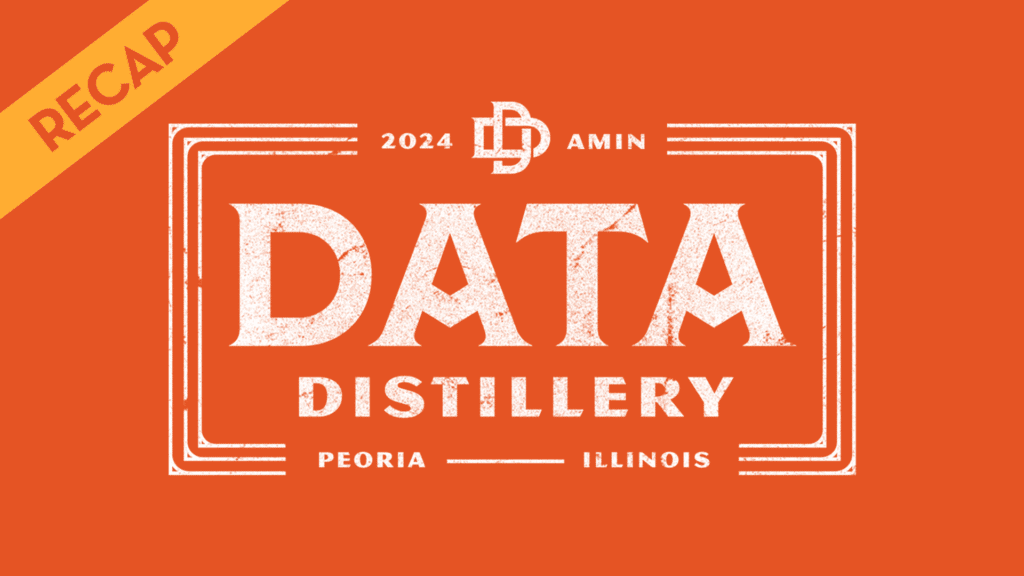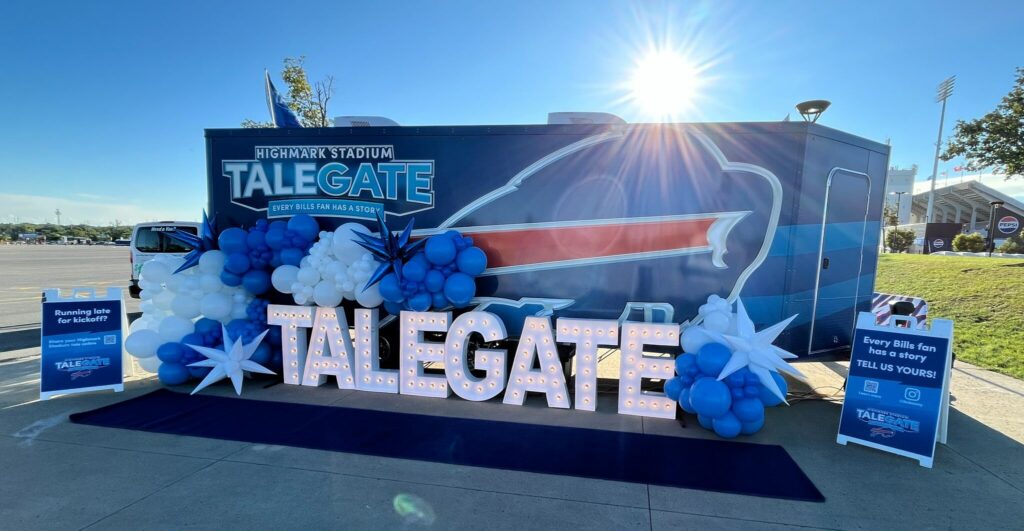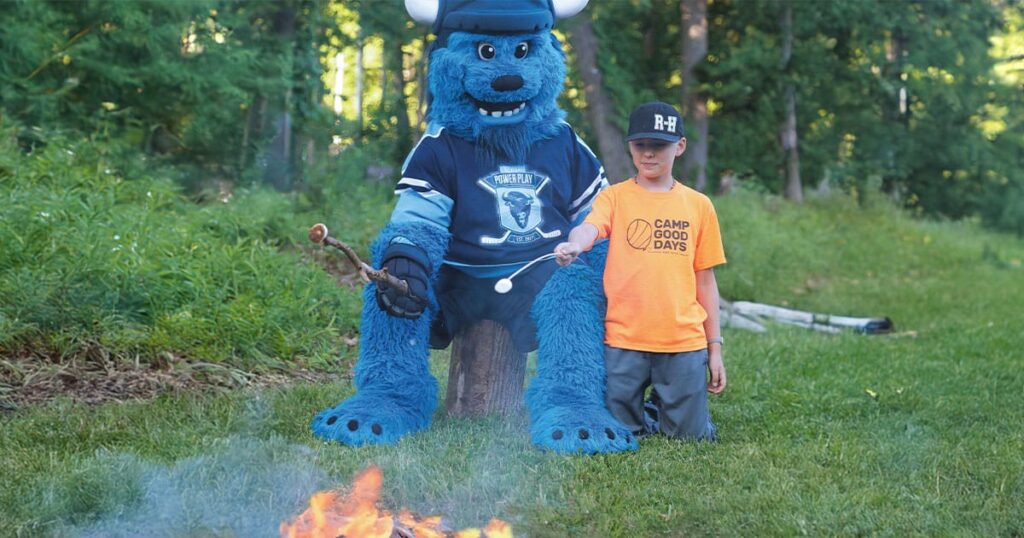Distilling Data at AMIN Worldwide’s 2024 Conference
Cheryl Kondrak Clayton
Senior Research Manager

A couple of weeks ago, two of us from the Crowley Webb data analytics department attended Advertising and Marketing Independent Network (AMIN) Worldwide’s Data Distillery conference in Peoria, Illinois. While Peoria might not seem like the obvious choice for a cutting-edge marketing event, its rich history and cultural significance made it an ideal setting to explore how data can drive meaningful connections. Known once as the “Whiskey Capital of the World” and home to the global industrial giant Caterpillar, Peoria has long been a symbol of mainstream appeal—captured by the famous phrase “Will it play in Peoria?” This question, about whether something resonates with the broader public, perfectly aligned with the conference’s focus on distilling data into actionable insights that connect with audiences. The city’s historical ties, including Abraham Lincoln’s famous anti-slavery speech and its status as the birthplace of Richard Pryor, further reinforced Peoria’s role as an unassuming dynamic stage for a conference dedicated to transforming data into powerful stories that fuel growth.
To make this happen, AMIN brought together experts from all corners of the marketing world—data scientists, creative strategists, and agency leaders—all working toward the same goal: harnessing data to help brands grow and thrive. But it wasn’t just about crunching numbers. It was about understanding people and using data to tell stories that resonate with them at an emotional level. After all, as Seth Godin so aptly put it, “Marketing is no longer about the stuff you make, but the stories you tell.”
As a panelist in a session on using data to build relationships, it was exciting to see how much emphasis was placed on turning raw information into something that truly matters to clients and customers. Much like distilling whiskey, the process is all about refinement—taking vast amounts of data and boiling it down to insights that can drive meaningful change and foster deeper connections.
Key Takeaways: Marketing in the Age of Insights
While Peoria’s history set the stage, the heart of the conference was about looking forward—how data can shape the future of marketing. Here are some of the most impactful takeaways from the sessions:
Customer-Centric Data: Focus on What Matters
- One of the recurring themes was the importance of putting the customer at the center of everything. It’s easy to get caught up in numbers and metrics, but the real value lies in distilling data to focus on what truly matters: the customer. It is vital to look beyond product or service engagement and consider the customer’s broader mindset and behavior, including the emotions driving their decisions. After all, customers aren’t just purchasing products—they’re seeking experiences that align with their identities and feelings.
- During our panel, Using Data to Build Relationships At Your Agency, we explored how data can also be a powerful tool for fostering deeper connections within internal teams, from account services to creatives. By breaking down data silos and ensuring that insights are accessible across departments, teams can collaborate more effectively and align their efforts toward a common goal. For instance, when creative teams have access to customer insights, they can craft more resonant and emotionally impactful campaigns. This kind of data-driven collaboration not only strengthens the quality of the results, but also creates a more unified, efficient agency.
The Power of Emotion: Data Can Help Create Human Connections
- As touched upon, there were recurring discussions surrounding how brands can use data to appeal to emotions, with successful marketing going beyond logic and tapping into what truly makes people feel. This idea was reinforced throughout the conference, where speakers emphasized that storytelling is at the core of any effective campaign. By using data to dig deeper into the emotional drivers behind customer behavior—understanding not just what they do but why—they highlighted the importance of creating marketing that resonates on a personal level. Whether it’s uncovering a customer’s desires, fears, or aspirations, data allows us to tell stories that speak to the human experience, leading to more genuine connections, loyalty, and ultimately, lasting relationships.
AI and Humans: A Growing Partnership
- AI is great at doing things like writing code, analyzing large datasets, and summarizing information. But as several speakers pointed out, human insight is still critical to making that data meaningful. AI can tell us what people are doing, but humans are still essential for understanding why they’re doing it.
- There was also a lot of buzz at the conference about pairing AI with human intuition—especially when it comes to social listening and staying relevant in a fast-paced world. AI might be great at spotting patterns, but it’s our job to interpret those patterns and tell the bigger story. While AI can streamline processes and offer powerful insights, the human element—our ability to understand context, nuance, and emotion—remains irreplaceable. As sophisticated as AI gets, it’s unlikely the role of the human in shaping narratives, building relationships, and making strategic decisions is going anywhere anytime soon.
Navigating the Cookie Problem: Tracking and Privacy Challenges
- With new privacy regulations and the eventual loss of cookies, tracking consumer behavior is becoming less reliable. This issue was addressed head-on at the conference. Attendees were introduced to alternative solutions like media mix modeling and causal impact analysis, which can help fill the gaps left by traditional cookie-based tracking.
- One speaker stressed the importance of adapting our data strategies to account for “signal loss,” urging agencies to think more holistically when analyzing customer journeys. While cookies may have been a valuable tool, relying solely on them is no longer an option. It’s about finding new ways to connect the dots and get the full picture.
Collaboration Is Key: Synchronizing Data Across Teams
- The value of collaboration came up repeatedly, particularly when it comes to synchronizing data across teams. It’s not just about the raw data—it’s about how we communicate those insights and making sure everyone from the media team to the creative department is on the same page. Aligning different parts of an organization can lead to better insights and, ultimately, better business results.
- The goal of integrating data at every level of the storytelling process was particularly compelling. Raw numbers alone don’t tell the full story, but when paired with creative insight and a deep understanding of the customer, that data becomes a powerful tool.
Distilling Data to Craft the Future
Attending AMIN Worldwide’s Data Distillery was an incredible experience, and the insights we gained are already shaping how we approach data at Crowley Webb. Whether it’s using data to deepen client and customer relationships or collaborating across teams to uncover powerful insights, the lessons learned in Peoria will continue to influence how we tell stories and craft strategies.
As we navigate an increasingly complex marketing landscape, with new challenges like privacy regulations and the rise of AI, one thing remains clear: data, when distilled down to its essence, helps us connect more deeply with our audiences.
If you’re curious about how Crowley Webb can help your business make informed decisions through the perfect blend of data science and creativity, let’s talk! Together, we can uncover meaningful insights that lead to real, measurable results.


